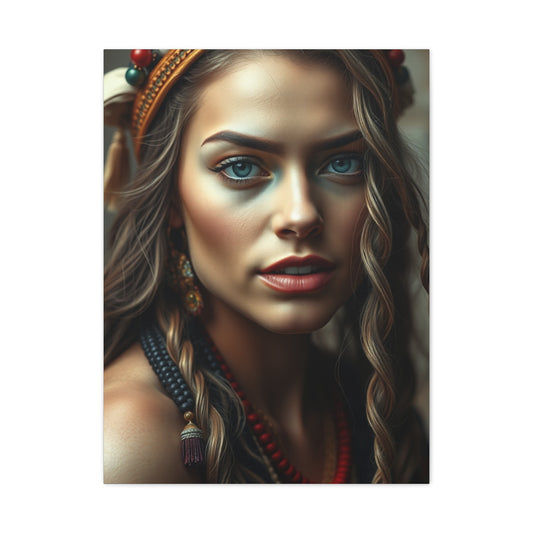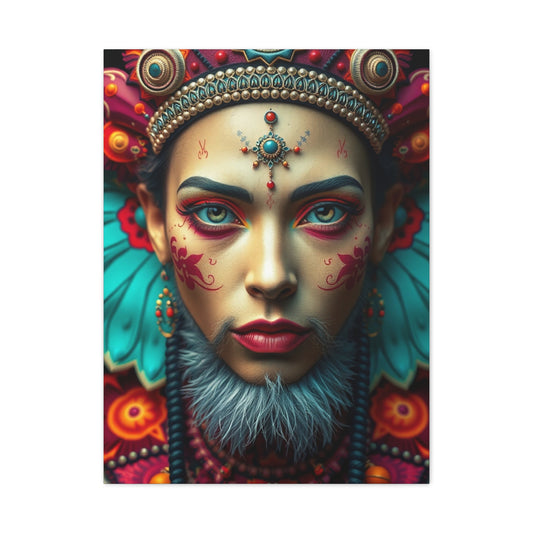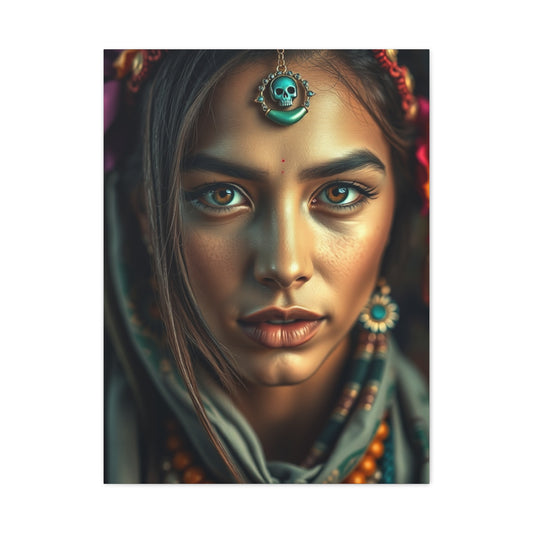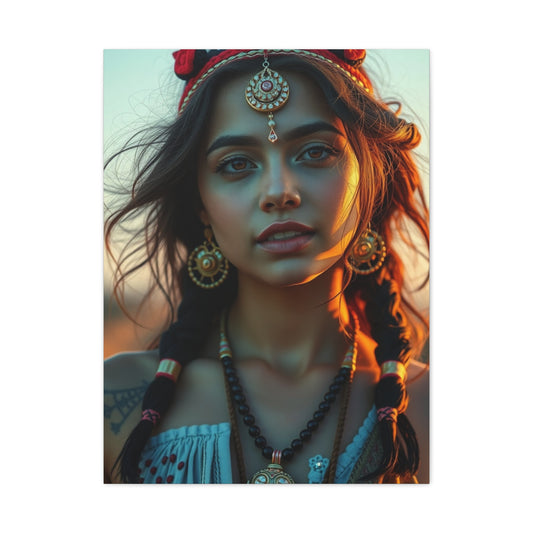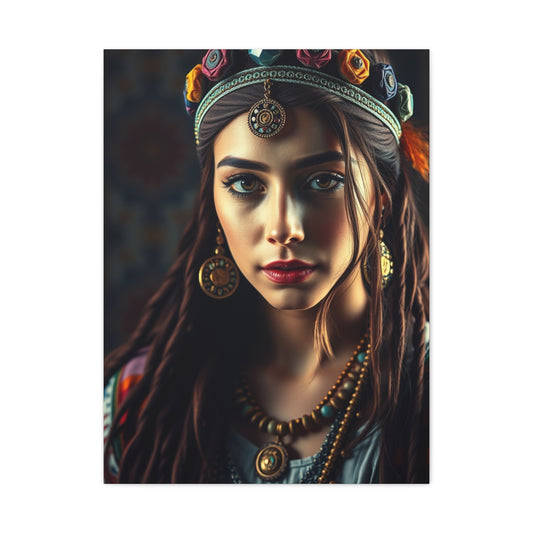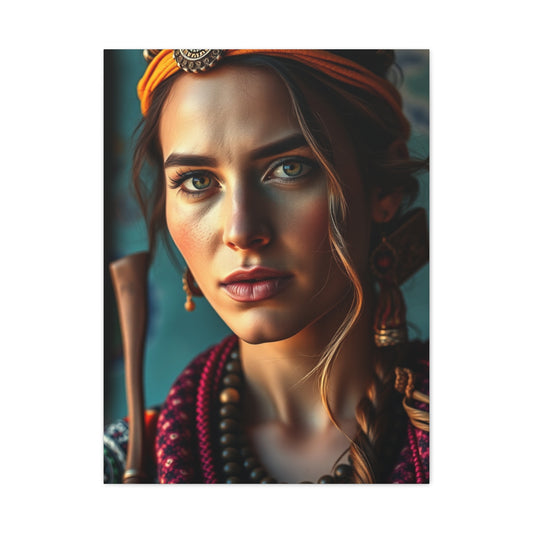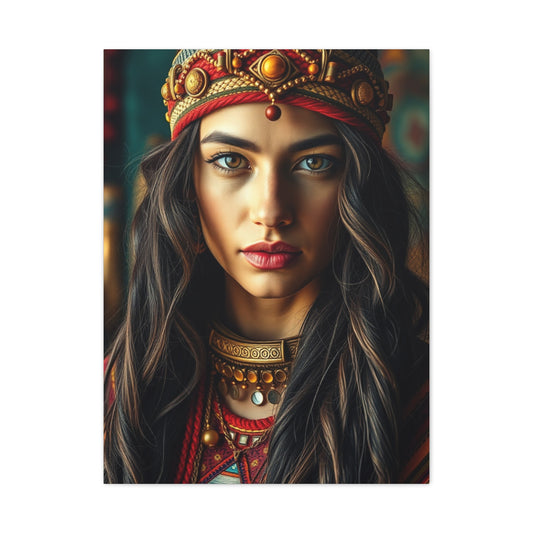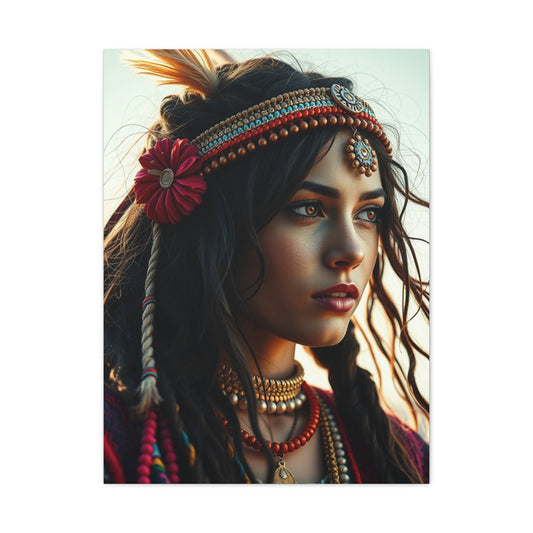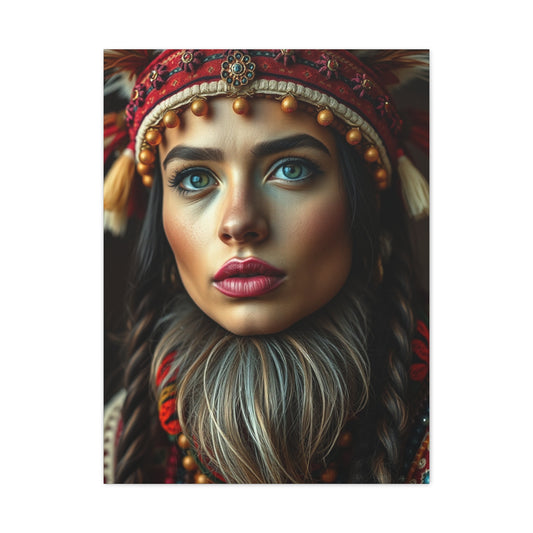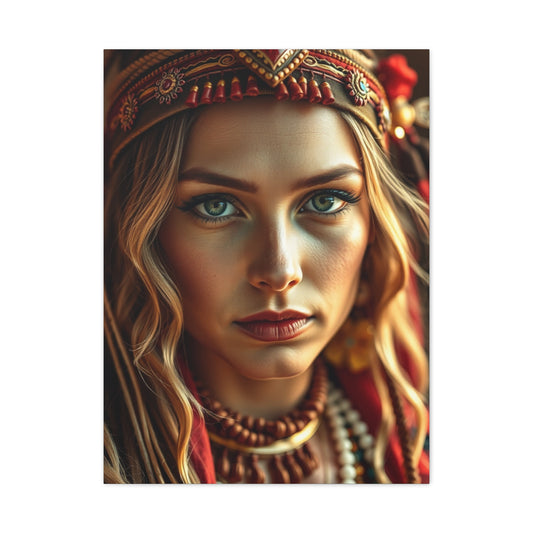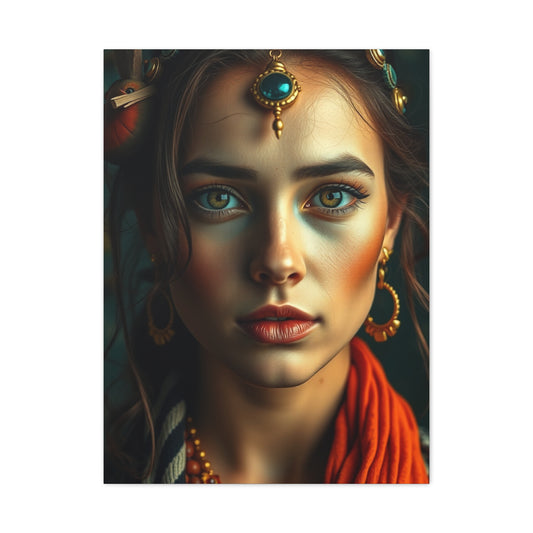Extraordinary Fabric Wall Decor and Beyond: Ultimate 5 boho Wall Art Concepts
The boho aesthetic represents far more than mere decoration; it embodies a philosophy of artistic expression, cultural appreciation, and unbridled creativity. This distinctive design approach celebrates individuality while embracing influences from countless global traditions, creating spaces that pulse with life, character, and meaningful storytelling. When considering boho wall art for your interior spaces, you're not simply selecting decorative elements – you're curating a collection of meaningful pieces that reflect your soul's journey and artistic sensibilities.
Contemporary boho design has evolved significantly from its original 19th-century Parisian roots, where artists and writers created unconventional living spaces that defied societal norms. Today's interpretation maintains that rebellious spirit while incorporating sophisticated design principles that appeal to modern sensibilities. The beauty of boho wall art lies in its ability to transform sterile environments into vibrant sanctuaries that tell compelling stories through texture, color, and cultural symbolism.
Understanding the profound impact that carefully selected wall treatments can have on your living environment requires appreciation for the multifaceted nature of boho design. This aesthetic thrives on contradiction – mixing rough textures with delicate details, combining ancient artifacts with contemporary creations, and blending bold statements with subtle nuances. The result creates spaces that feel both worldly and intimate, sophisticated yet approachable.
The psychological benefits of incorporating boho elements into residential spaces cannot be overstated. Research consistently demonstrates that environments rich in texture, natural materials, and artistic expression promote creativity, reduce stress, and enhance overall wellbeing. boho wall art serves as a daily reminder to embrace beauty, celebrate diversity, and maintain connection with the natural world.
Luxurious Textile Wall Installations and Fabric Artistry
Textile wall installations represent the cornerstone of authentic boho interior design, offering unparalleled opportunities for creative expression through fabric manipulation, cultural storytelling, and textural exploration. These remarkable pieces transcend traditional two-dimensional artwork by introducing sculptural elements that engage multiple senses simultaneously. The tactile quality of woven materials, embroidered surfaces, and knotted constructions creates intimate connections between inhabitants and their surrounding environment.
Hand-woven tapestries emerge as particularly compelling focal points within boho spaces, carrying centuries of cultural tradition while adapting to contemporary aesthetic preferences. These masterpieces often originate from regions renowned for their textile heritage – Peruvian highlands where indigenous communities maintain ancient weaving techniques, Moroccan medinas where artisans create intricate geometric patterns, or Indian villages where generations of families have perfected complex embroidery methods.
The production process behind quality textile wall art involves meticulous attention to detail that machine manufacturing cannot replicate. Artisans spend months creating individual pieces, carefully selecting natural fibers, mixing traditional dyes, and employing techniques passed down through generations. This human element imbues each piece with unique character, ensuring that no two installations appear identical even when following similar patterns or color schemes.
Contemporary designers increasingly recognize the versatility of textile wall treatments, experimenting with unconventional materials and installation methods that challenge traditional boundaries. Recycled fabric installations promote environmental consciousness while creating striking visual narratives about sustainability and resourcefulness. Mixed-media approaches combine traditional textiles with modern elements like metal threads, plastic fibers, or digital printing to create hybrid artworks that bridge historical and contemporary aesthetics.
The psychological impact of textile wall art extends beyond mere visual appreciation. Soft materials naturally absorb sound, creating more peaceful environments that promote relaxation and contemplation. The organic irregularities found in handmade pieces provide visual rest points that contrast sharply with the geometric precision dominating modern architectural elements. This juxtaposition helps create balanced environments that feel both stimulating and calming.
Installation considerations for textile wall art require careful planning to ensure optimal presentation while preserving the integrity of delicate materials. Climate control becomes particularly important when displaying antique pieces, as fluctuations in temperature and humidity can cause irreversible damage to natural fibers. Professional conservation techniques may be necessary for valuable or historically significant pieces, involving specialized mounting systems that distribute weight evenly while minimizing contact with potentially harmful materials.
Layering techniques allow creative individuals to build complex visual narratives through strategic placement of multiple textile elements. Overlapping pieces at different depths creates dimensional interest while establishing visual hierarchies that guide viewer attention through carefully orchestrated sequences. This approach works particularly well in larger spaces where single pieces might appear lost or insufficient to fill available wall surfaces effectively.
Sophisticated Macramé Installations and Knotwork Artistry
Macramé represents one of the most sophisticated expressions of boho wall art, combining mathematical precision with organic flowing forms that capture the essence of free-spirited creativity. This ancient craft technique, which originated in 13th-century Arabic cultures before spreading throughout Europe and eventually reaching peak popularity during the 1970s boho movement, has experienced remarkable renaissance as contemporary designers rediscover its unique aesthetic possibilities.
The fundamental appeal of macramé lies in its transformation of simple cordage into complex sculptural forms through nothing more than strategic knotting patterns. Master practitioners develop intuitive understanding of how different knot combinations create varying textures, densities, and structural characteristics that can be manipulated to achieve specific visual effects. This knowledge requires years of practice to fully develop, as subtle variations in tension, spacing, and material selection can dramatically alter final results.
Contemporary macramé artists push traditional boundaries by incorporating unconventional materials alongside classic natural fibers. Metallic threads introduce reflective elements that catch and scatter light throughout surrounding spaces, creating dynamic installations that change appearance as illumination conditions shift throughout the day. Synthetic materials offer enhanced durability and color stability while maintaining the tactile qualities that make macramé so appealing to touch-oriented individuals.
Large-scale macramé installations function as architectural elements rather than mere decorative accessories, capable of defining spatial boundaries within open floor plans or creating intimate conversation areas within expansive rooms. These substantial pieces require careful engineering considerations to ensure adequate structural support, as even lightweight materials can accumulate significant mass when assembled into room-sized installations.
The meditative aspects of creating macramé art contribute significantly to its psychological appeal for both artists and viewers. The repetitive nature of knotting patterns induces contemplative states similar to those achieved through traditional meditation practices, while the gradual emergence of complex forms from simple beginnings provides profound satisfaction and sense of accomplishment. This connection between process and product imbues finished pieces with spiritual energy that sensitive individuals can perceive within completed installations.
Color theory plays crucial roles in successful macramé design, as the interplay between different hue combinations can either enhance or diminish the visual impact of intricate knotwork patterns. Earth tones naturally complement boho aesthetics while providing neutral foundations that allow other decorative elements to assume prominence. However, strategic incorporation of accent colors through selective dyeing or material substitution can create stunning focal points that draw attention to particularly complex or meaningful sections.
Advanced practitioners experiment with three-dimensional forms that extend beyond traditional flat wall-hanging formats, creating sculptural pieces that occupy significant volumes of space while maintaining the essential characteristics that define macramé as an art form. These experimental approaches often incorporate additional materials like wooden frames, metal armatures, or glass elements that provide structural support while contributing their own aesthetic qualities to overall compositions.
Creative Gallery Wall Compositions and Mixed Media Assemblages
Gallery wall compositions represent sophisticated approaches to boho wall art that celebrate diversity, creativity, and personal expression through carefully curated collections of complementary elements. These complex installations require artistic vision combined with technical expertise to achieve balanced compositions that function as unified statements while allowing individual components to maintain their distinct characteristics and cultural significance.
The planning phase for successful gallery walls involves extensive experimentation with arrangement possibilities, typically beginning with paper templates or digital mockups that allow designers to explore multiple configuration options without creating unnecessary wall damage through repeated installations. This preliminary work proves essential when dealing with valuable or fragile pieces that cannot withstand repeated handling during trial-and-error arrangement processes.
Scale relationships assume critical importance in gallery wall design, as improper sizing can create visual discord that undermines the impact of even exceptional individual pieces. Master designers develop intuitive understanding of how different proportional relationships affect viewer perception, using mathematical principles like golden ratio calculations alongside subjective aesthetic judgments to achieve harmonious compositions that feel both dynamic and stable.
Mixed media integration expands creative possibilities beyond traditional two-dimensional formats, incorporating sculptural elements, found objects, and three-dimensional artworks that add depth and textural interest to wall compositions. Successful integration requires careful consideration of physical relationships between elements, ensuring adequate clearances while maintaining visual connections that unify disparate components into coherent artistic statements.
Lighting design plays crucial roles in gallery wall success, as improper illumination can create harsh shadows, reflective glare, or color distortion that diminishes the impact of carefully selected artwork. Professional lighting designers recommend layered approaches that combine ambient, accent, and task lighting to create flexible systems capable of adapting to changing display requirements and daily usage patterns.
The curatorial aspect of gallery wall development involves ongoing refinement as collections evolve through acquisition of new pieces, disposal of elements that no longer contribute to desired aesthetic effects, and seasonal rotations that maintain visual freshness while protecting valuable items from continuous light exposure. This dynamic approach prevents installations from becoming static displays that lose their ability to surprise and delight viewers over extended periods.
Documentation of gallery wall configurations through detailed photography and written records facilitates future reinstallation efforts while preserving information about successful arrangement strategies that can inform subsequent projects. This archival approach proves particularly valuable when collections must be relocated or when specific configurations achieve exceptional aesthetic success that merits replication or adaptation for different spaces.
Distinctive Frame Selection and Eclectic Presentation Methods
Frame selection represents often-overlooked opportunities for creative expression within boho wall art installations, as thoughtful choices can enhance artwork presentation while contributing unique aesthetic elements that support overall design concepts. Traditional approaches that prioritize uniformity and standardization conflict with boho principles that celebrate diversity, individual expression, and cultural authenticity through eclectic combinations of materials, styles, and finishing techniques.
Vintage frame collecting has emerged as specialized field within antique markets, as discerning collectors recognize the artistic merit of exceptional examples that demonstrate superior craftsmanship, unique design features, or historical significance. Hand-carved wooden frames from Victorian era craftsmen exhibit levels of detail and artistic sophistication that contemporary mass production cannot replicate, while Art Nouveau examples showcase flowing organic forms that complement boho aesthetic principles.
Mixed metal approaches combine different metallic finishes within single installations, creating visual rhythms through strategic placement of brass, copper, silver, and pewter elements that catch and reflect light in varying ways throughout daily illumination cycles. This technique requires careful consideration of existing architectural elements to ensure harmony with permanent fixtures while maintaining sufficient contrast to create visual interest and definition.
Cultural frame traditions from different global regions contribute authentic elements that enhance the international character essential to sophisticated boho design. Carved Indian architectural salvage pieces, Moroccan geometric metalwork, Mexican folk art frames, and African ceremonial elements each bring unique aesthetic qualities that can transform ordinary artwork into extraordinary focal points when properly integrated within thoughtful compositions.
Natural material frames utilizing reclaimed wood, bamboo, woven grasses, or stone elements connect indoor spaces with outdoor environments while supporting sustainability principles increasingly important to environmentally conscious consumers. These organic elements introduce textural variety and color variation that synthetic materials cannot replicate, though they may require additional maintenance to preserve their appearance and structural integrity over time.
Custom framing services offer opportunities to create unique solutions tailored to specific artworks and installation requirements, though such services typically require significant financial investment and extended lead times that must be factored into project planning schedules. Collaboration with skilled framers can produce exceptional results that perfectly complement specific pieces while contributing to overall design concepts.
The psychological impact of frame selection extends beyond mere aesthetic considerations, as different materials, colors, and styles can influence viewer perception of enclosed artwork while contributing to overall environmental mood and character. Heavy, ornate frames suggest formality and importance, while simple, natural materials promote relaxation and casual appreciation that aligns with boho lifestyle values.
Innovative Plant Wall Installations and Living Art Systems
Plant wall installations represent dynamic approaches to boho wall art that combine aesthetic appeal with environmental benefits through integration of living elements that evolve continuously throughout seasonal cycles. These sophisticated systems transform static wall surfaces into breathing ecosystems that purify indoor air while providing psychological benefits associated with connection to natural environments.
Hydroponic systems enable plant wall creation in locations without adequate natural light or convenient water access, utilizing artificial lighting and automated irrigation to maintain optimal growing conditions for diverse plant species. These technological solutions expand installation possibilities while reducing maintenance requirements that might otherwise limit plant wall feasibility for busy households or commercial applications.
Species selection requires careful consideration of environmental conditions, maintenance requirements, and aesthetic compatibility to ensure long-term success of plant wall installations. Tropical species like pothos, philodendrons, and prayer plants thrive in indoor conditions while providing lush foliage that complements boho design principles. Succulent varieties offer alternative approaches for locations with limited water access or minimal maintenance capabilities.
Structural engineering considerations become paramount for large plant wall installations, as soil, water, and plant materials can accumulate significant weight that exceeds standard wall construction capacities. Professional consultation may be necessary to ensure adequate support systems that prevent structural damage while providing stable foundations for healthy plant growth.
Maintenance protocols for plant wall systems require consistent attention to watering schedules, fertilizer applications, pest management, and pruning requirements that vary according to seasonal cycles and individual plant needs. Automated systems can reduce daily maintenance burdens while ensuring optimal growing conditions, though such systems require initial investment and periodic technical support.
The therapeutic benefits of tending plant wall installations provide ongoing opportunities for stress relief, meditative practice, and connection with natural cycles that urban living often obscures. Research consistently demonstrates positive psychological effects of gardening activities, including reduced anxiety, improved mood, and enhanced sense of accomplishment through nurturing living systems.
Integration of plant walls with other boho design elements requires careful consideration of moisture management, air circulation, and access requirements that might conflict with traditional artwork placement or furniture arrangements. Successful integration often involves custom design solutions that accommodate both living systems and static decorative elements within unified compositions.
Cultural Heritage Art and Global Artistic Traditions
Cultural heritage art represents essential components of authentic boho design that honor diverse global traditions while supporting artisan communities maintaining centuries-old craft techniques. These meaningful pieces transcend mere decoration by serving as cultural ambassadors that educate viewers about distant places, historical periods, and artistic achievements that might otherwise remain unknown to contemporary audiences.
African textile traditions contribute extraordinary examples of sophisticated design thinking, mathematical precision, and cultural symbolism through mud cloth patterns, kente weaving, and ceremonial garments adapted for wall display. These pieces often incorporate complex geometric patterns that encode cultural information, spiritual beliefs, and community identities through carefully orchestrated combinations of colors, shapes, and arrangement strategies.
Indian artistic traditions offer incredibly diverse approaches to wall art creation, from intricate miniature paintings that require magnifying glasses to appreciate their delicate detail work to large-scale embroidered hangings that transform entire room environments through their bold colors and dramatic scale. Block printing, mirror work, and metallic thread embroidery represent just few examples of techniques that demonstrate Indian textile artistry at its finest.
Mexican folk art traditions encompass remarkable range of artistic expressions, from Oaxacan weavings that incorporate pre-Columbian design motifs to contemporary interpretations of traditional techniques that maintain cultural authenticity while appealing to modern aesthetic sensibilities. Otomi embroidery has gained particular recognition for its sophisticated use of natural imagery rendered through precise needlework techniques.
Southeast Asian artistic traditions contribute unique approaches to wall art creation through batik techniques, ikat weaving, and ceremonial textiles that demonstrate sophisticated understanding of color theory, pattern development, and cultural symbolism. Indonesian batik masters spend years developing expertise necessary to create museum-quality pieces that represent pinnacles of artistic achievement within their cultural contexts.
Middle Eastern artistic traditions offer remarkable examples of geometric pattern development that influenced mathematical understanding while creating visually stunning decorative elements. Persian carpet motifs adapted for wall display, Islamic calligraphy, and architectural tile patterns demonstrate sophisticated design principles that remain relevant to contemporary aesthetic discussions.
The ethical considerations surrounding cultural art acquisition require careful attention to fair trade practices, artisan compensation, and cultural appropriation concerns that have gained prominence as global awareness of colonial exploitation increases. Responsible collectors seek out legitimate sources that ensure appropriate compensation for artists while maintaining respect for cultural traditions and community ownership of artistic heritage.
Sustainable DIY Projects and Eco-Friendly Artistic Creation
DIY boho wall art projects offer rewarding opportunities for personal creative expression while supporting sustainability principles through utilization of recycled materials, natural elements, and low-impact production methods. These projects enable individuals to create unique pieces perfectly suited to their specific spaces, color preferences, and personal aesthetic sensibilities while developing artistic skills and environmental consciousness.
Natural material collection requires understanding of seasonal availability, legal harvesting restrictions, and proper preparation techniques that ensure longevity of finished pieces. Driftwood gathering, feather collection, shell hunting, and stone selection each involve different considerations regarding timing, location selection, and processing methods necessary to create stable artistic elements.
Upcycling techniques transform discarded materials into artistic treasures through creative reimagining of original purposes and aesthetic potential. Vintage fabric scraps can be combined into complex textile installations, old picture frames can be modified through painting or decorative treatment, and abandoned architectural elements can be repurposed as unique display systems for botanical or sculptural elements.
Color theory applications guide successful DIY project development through understanding of how different hue combinations affect emotional responses, spatial perception, and integration with existing interior design elements. Earth tone palettes naturally complement boho aesthetics while providing flexibility for seasonal adjustments and evolutionary changes in personal taste preferences.
Tool requirements for DIY boho projects typically involve basic hand tools rather than expensive power equipment, making these activities accessible to individuals with limited workshop facilities or technical experience. However, proper safety equipment and technique instruction remain essential for preventing injuries during crafting activities that involve sharp objects, chemical treatments, or electrical components.
Skill development through DIY projects provides ongoing opportunities for artistic growth while building confidence in creative abilities that might otherwise remain underdeveloped. Beginning with simple projects and gradually progressing to more complex challenges creates sustainable learning curves that maintain motivation while preventing overwhelming frustration that discourages continued effort.
The meditative aspects of hands-on creative work provide stress relief and mental health benefits that complement the aesthetic rewards of completed projects. Repetitive activities like weaving, knotting, or painting induce contemplative states that promote relaxation while engaging creative faculties often neglected in technology-focused modern lifestyles.
Advanced Installation Techniques and Professional Methods
Professional installation of boho wall art requires specialized knowledge of structural considerations, preservation techniques, and aesthetic optimization strategies that ensure optimal presentation while protecting valuable pieces from damage through improper mounting or environmental exposure. These technical aspects often determine long-term success of wall art investments, making professional consultation valuable for significant installations.
Wall preparation involves thorough assessment of structural capabilities, surface conditions, and environmental factors that might affect installation success or artwork preservation. Older buildings may require reinforcement before accommodating heavy textile installations, while new construction might need modifications to standard finishing techniques to provide appropriate mounting surfaces for specialized hanging systems.
Mounting hardware selection requires matching appropriate systems to specific artwork characteristics, considering factors like weight distribution, material sensitivity, and adjustment capabilities necessary for achieving optimal positioning. Museum-quality hanging systems often prove worthwhile investments for valuable pieces, providing superior support while enabling easy repositioning for cleaning or seasonal rotation.
Climate control considerations become particularly important for textile artwork that can suffer irreversible damage from excessive humidity, temperature fluctuations, or air pollution exposure. Professional conservation services recommend specific environmental parameters for different material types while providing monitoring systems that alert owners to potentially harmful conditions before damage occurs.
Insurance considerations for valuable wall art collections require documentation of authenticity, condition assessments, and professional appraisals that establish replacement values for coverage purposes. Photography documentation should include detailed images showing construction techniques, wear patterns, and unique characteristics that distinguish genuine pieces from reproductions.
Security systems for valuable wall art installations may require consultation with specialists familiar with protecting cultural artifacts from theft while maintaining aesthetic appeal and accessibility for daily enjoyment. Discrete alarm systems, monitoring cameras, and reinforced mounting hardware can provide protection without compromising visual presentation or residential comfort.
Maintenance protocols for different artwork types require understanding of appropriate cleaning techniques, storage methods, and preventive care measures that extend useful life while preserving aesthetic qualities. Professional conservation services can provide specific guidance for individual pieces while offering periodic condition assessments that identify potential problems before they require expensive remedial treatment.
Color Theory and Aesthetic Harmony in boho Design
Color theory applications within boho wall art require sophisticated understanding of how different hue combinations affect emotional responses, spatial perception, and integration with existing architectural elements. Successful color coordination extends beyond simple matching to encompass complex relationships between primary elements, accent colors, and neutral foundations that support overall design concepts while maintaining visual interest and emotional resonance.
Earth tone foundations provide stable bases for boho color schemes, utilizing browns, tans, ochres, and rust colors that connect indoor spaces with natural environments while offering compatibility with diverse accent colors that might be incorporated through seasonal changes or evolutionary design development. These grounding colors prevent overwhelming visual chaos while maintaining sufficient warmth and richness to support boho lifestyle aesthetics.
Jewel tone accents introduce sophisticated color relationships through strategic placement of emerald, sapphire, ruby, and amber colors that catch light dramatically while maintaining harmony with earth tone foundations. These intense colors function most effectively when used sparingly as focal points rather than dominant elements, creating visual excitement without overwhelming sensory systems or competing destructively with other decorative elements.
Metallic elements contribute reflective qualities that enhance color relationships through their ability to capture and scatter ambient light while introducing subtle color variations that change throughout daily illumination cycles. Gold, silver, copper, and bronze elements each contribute distinct characteristics that can either warm or cool surrounding color relationships depending on their specific placement and proportional relationships.
Cultural color symbolism adds layers of meaning to boho installations that honor traditional associations while avoiding inappropriate usage that might demonstrate cultural insensitivity or historical ignorance. Understanding of color significance within different cultural contexts enables respectful integration of diverse artistic traditions while maintaining authentic expression of personal aesthetic preferences.
Seasonal color adjustments provide opportunities for refreshing boho installations through strategic substitution of accent elements, textile components, or decorative accessories that reflect changing natural cycles while maintaining core design principles. These modifications can be accomplished through relatively minor changes that produce significant visual impact without requiring complete reinstallation of major elements.
The psychological effects of different color combinations require consideration of intended usage patterns for spaces containing boho wall art installations. Bedrooms benefit from calming color relationships that promote rest and relaxation, while social areas can accommodate more energetic combinations that stimulate conversation and creative thinking without creating visual fatigue during extended exposure periods.
Lighting Design for Optimal boho Wall Art Presentation
Lighting design represents crucial aspects of successful boho wall art installation that can dramatically enhance or diminish the impact of carefully selected pieces through proper illumination techniques that highlight textural qualities, color relationships, and three-dimensional characteristics while protecting delicate materials from harmful ultraviolet radiation and excessive heat exposure.
Natural light considerations require understanding of directional changes throughout daily and seasonal cycles that affect artwork appearance and preservation conditions. South-facing installations receive maximum illumination but also experience greatest ultraviolet exposure, while north-facing locations provide more stable conditions but may require supplemental artificial lighting to achieve optimal presentation quality.
Artificial lighting systems offer precise control over illumination quality, intensity, and direction while providing consistent conditions that protect artwork from environmental fluctuations that might cause fading, material degradation, or other preservation problems. LED technology provides energy-efficient solutions that generate minimal heat while offering excellent color rendering properties essential for accurate artwork presentation.
Track lighting systems provide flexible solutions for gallery wall installations that require individual adjustment capabilities for multiple pieces with different illumination requirements. These systems enable precise positioning of light fixtures while maintaining clean aesthetic lines that complement boho design principles without introducing industrial elements that conflict with organic material preferences.
Accent lighting techniques create dramatic effects through strategic use of spotlights, uplights, or backlighting that emphasize specific artwork characteristics while contributing to overall environmental mood and character. These approaches require careful planning to avoid creating harsh shadows or reflective glare that might interfere with comfortable viewing conditions.
Dimming controls enable adjustment of lighting intensity according to time of day, seasonal conditions, and specific activity requirements while providing energy conservation benefits and extended lamp life. Smart lighting systems offer automated programming capabilities that optimize illumination schedules while reducing manual adjustment requirements for busy households.
Color temperature selection affects viewer perception of artwork colors and overall environmental character, with warmer temperatures promoting relaxation and comfort while cooler temperatures enhance focus and detailed examination capabilities. Tunable lighting systems offer flexibility to adjust color temperature according to changing requirements throughout different usage periods.
Space Planning and Integration Strategies for boho Interiors
Space planning for boho wall art installations requires holistic approaches that consider relationships between artwork, furniture placement, traffic patterns, and architectural elements to create unified environments that support both aesthetic goals and functional requirements. Successful integration balances visual impact with practical considerations while maintaining flexibility for evolutionary changes in collections and lifestyle needs.
Furniture relationships assume critical importance in boho space planning, as seating arrangements, storage systems, and functional elements must complement wall art installations while maintaining appropriate clearances for safe movement and comfortable usage. Low-profile furniture often works best with large wall installations, preventing visual competition while maintaining human scale relationships essential for residential comfort.
Traffic flow considerations ensure that wall art installations do not interfere with natural movement patterns while positioning key pieces for optimal viewing from primary circulation routes. Entrance areas offer opportunities for dramatic first impressions, while more intimate pieces might be positioned in quiet corners or private spaces where detailed examination can occur without interruption.
Architectural integration involves working with existing structural elements like windows, doorways, built-in cabinetry, and mechanical systems to create seamless relationships between permanent and decorative elements. Successful integration often requires custom solutions that accommodate unusual proportions or awkward locations while maintaining design coherence and aesthetic appeal.
Storage solutions for rotating collections enable periodic changes that maintain visual freshness while protecting valuable pieces from continuous light exposure or physical damage. Climate-controlled storage areas preserve textile artwork and other sensitive materials while providing organized systems for managing extensive collections that exceed display capacity.
Flexibility planning anticipates future changes in collections, family composition, or lifestyle requirements that might necessitate reconfiguration of wall art installations. Modular approaches and adaptable mounting systems enable modifications without requiring complete reinstallation while maintaining professional presentation quality throughout transitional periods.
Scale relationships between different rooms require coordinated approaches that maintain design continuity while acknowledging functional differences and proportion requirements specific to individual spaces. Consistent color palettes, material selections, and stylistic approaches create unified experiences while accommodating varied spatial characteristics and usage patterns.
Maintenance and Conservation of boho Wall Art Collections
Proper maintenance and conservation of boho wall art collections ensures long-term preservation of valuable pieces while maintaining their aesthetic appeal and cultural significance for future generations. These responsibilities require understanding of material-specific care requirements, environmental monitoring, and professional conservation services that address both routine maintenance needs and emergency interventions when damage occurs.
Daily maintenance protocols involve regular inspection for signs of deterioration, pest activity, or environmental damage that might require immediate attention to prevent serious problems from developing. Visual assessments should document changes in color, texture, or structural integrity while noting environmental conditions that might contribute to observed problems.
Cleaning procedures vary significantly according to material types and construction techniques, requiring specific knowledge of appropriate methods and cleaning agents that remove accumulated dust and pollutants without damaging delicate fibers, dyes, or decorative elements. Professional consultation proves valuable for establishing cleaning schedules and techniques appropriate for individual pieces within collections.
Environmental monitoring systems track temperature, humidity, and light exposure levels that affect artwork preservation while providing early warning of conditions that might cause damage. Digital monitoring devices offer convenient data logging capabilities that enable long-term trend analysis and optimization of environmental control systems.
Pest management programs prevent damage from insects, rodents, and other organisms that might find textile materials attractive for food sources or nesting materials. Integrated pest management approaches utilize prevention, monitoring, and targeted interventions that minimize chemical treatments while maintaining effective protection for vulnerable artwork.
Storage protocols for seasonal rotations or temporary removal require appropriate materials and techniques that prevent damage during handling, transportation, and storage periods. Museum-quality storage materials provide acid-free environments that prevent chemical deterioration while offering physical protection from dust, light, and mechanical damage.
Professional conservation services offer specialized treatments for damaged pieces that exceed capabilities of routine maintenance procedures. These services require significant investment but may prove essential for preserving valuable pieces that demonstrate historical significance, exceptional artistic merit, or irreplaceable cultural importance.
Seasonal Adaptations and Dynamic Display Strategies
Seasonal adaptations enable boho wall art installations to reflect changing natural cycles while maintaining core design principles and aesthetic coherence throughout yearly transitions. These dynamic approaches prevent static displays from becoming monotonous while providing opportunities for incorporating new pieces and exploring different artistic combinations that might reveal unexpected creative possibilities.
Spring renewals often involve introduction of lighter colors, floral motifs, and fresh botanical elements that reflect seasonal rebirth and growth themes while maintaining connection with boho appreciation for natural beauty and organic forms. Textile changes might include substitution of heavier winter pieces with lighter-weight alternatives that provide visual freshness without requiring complete reinstallation of major elements.
Summer modifications can emphasize cooling colors, natural materials, and outdoor-inspired themes that connect indoor spaces with expanded seasonal living patterns while maintaining comfortable environmental conditions during warmer weather periods. Plant installations might receive enhanced attention during growing seasons when favorable conditions support more ambitious botanical displays.
Autumn transitions provide opportunities for incorporating warmer colors, harvest themes, and cozy textile elements that prepare interior spaces for cooler weather while celebrating seasonal abundance and natural beauty. Vintage pieces with rich colors and substantial textures often work particularly well during autumn months when deeper, more complex color relationships enhance intimate environmental character.
Winter installations might emphasize warming colors, substantial textures, and indoor-focused themes that create cozy retreat environments during periods when outdoor activities become less appealing. Heavier textiles, layered compositions, and intimate lighting approaches contribute to seasonal comfort while maintaining visual interest during extended indoor periods.
Holiday integration enables temporary incorporation of celebratory elements that acknowledge cultural traditions while maintaining boho design principles and avoiding commercial aesthetic approaches that might conflict with authentic artistic expression. Handmade ornaments, natural decorations, and culturally significant pieces can enhance seasonal celebrations without compromising overall design integrity.
Documentation of seasonal arrangements through photography and written records enables replication of successful combinations while providing reference materials for future planning and creative development. This archival approach supports evolutionary refinement of display strategies while preserving successful solutions that might otherwise be forgotten over time.
Economic Considerations and Investment Strategies for boho Art Collections
Economic considerations play important roles in developing sustainable boho wall art collections that balance aesthetic goals with financial realities while building valuable cultural assets that might appreciate over time through careful selection and proper preservation. Understanding market dynamics, authentication processes, and investment potential enables informed decisions that support both immediate decorative needs and long-term financial objectives.
Budget allocation strategies require realistic assessment of available resources while prioritizing purchases that provide maximum impact within financial constraints. Beginning collectors might focus on building foundations with affordable pieces while gradually adding more significant works as resources permit and expertise develops through experience and education.
Market research enables identification of undervalued pieces, emerging artists, or cultural movements that might provide exceptional value propositions for informed collectors willing to investigate opportunities beyond mainstream commercial sources. Estate sales, auction houses, and international markets sometimes offer exceptional pieces at reasonable prices for collectors willing to invest time and effort in research and evaluation.
Authentication services protect collectors from costly mistakes while ensuring that significant purchases represent genuine examples of claimed artistic traditions, historical periods, or cultural origins. Professional appraisal services provide documentation necessary for insurance coverage while establishing baseline values that enable tracking of collection appreciation over time.
Insurance considerations require comprehensive documentation of collection contents, condition assessments, and current market values while ensuring adequate coverage for theft, damage, or loss scenarios. Specialized insurance providers familiar with art collections offer coverage options tailored to specific needs and risk profiles associated with different collection types and storage conditions.
Investment potential varies significantly among different types of boho wall art, with certain cultural traditions, artistic techniques, or historical periods demonstrating stronger appreciation patterns than others. However, primary focus should remain on personal aesthetic enjoyment rather than financial returns, as art markets can be unpredictable and investment outcomes uncertain.
Liquidation strategies provide exit options for collectors who might need to sell pieces due to changing circumstances, space limitations, or evolving aesthetic preferences. Understanding market conditions, appropriate sales venues, and timing considerations enables optimal realization of collection values when disposal becomes necessary or desirable.
Regional Variations and Cultural Authenticity in boho Design
Regional variations within boho design traditions reflect diverse cultural influences, climatic conditions, and available materials that have shaped distinctive aesthetic approaches throughout different geographic areas. Understanding these variations enables creation of authentic installations that honor specific cultural traditions while avoiding inappropriate appropriation or superficial imitation that might demonstrate cultural insensitivity or historical ignorance.
Mediterranean boho styles emphasize outdoor living connections, natural materials, and relaxed lifestyle approaches that reflect favorable climatic conditions and cultural traditions emphasizing leisure and social interaction. Whitewashed surfaces, blue accents, natural textiles, and ceramic elements create cohesive aesthetic approaches that translate effectively to similar climatic conditions worldwide.
Scandinavian interpretations incorporate minimalist principles, natural materials, and functional design approaches that balance boho creativity with practical considerations essential for harsh climatic conditions and cultural preferences for simplicity and efficiency. These approaches demonstrate how boho principles can adapt to different cultural contexts while maintaining essential characteristics.
Tropical boho styles emphasize lush plant materials, vibrant colors, and natural ventilation considerations that address humid climatic conditions while celebrating abundant natural beauty and relaxed lifestyle approaches. Bamboo, rattan, and other rapid-growth materials provide sustainable alternatives to traditional hardwoods while contributing authentic tropical aesthetic elements.
Conclusion
Boho wall art transcends the boundaries of decoration, standing instead as an evolving dialogue between culture, craftsmanship, and personal expression. As explored through textile artistry, macramé knotwork, mixed media gallery walls, distinctive framing, and living plant installations, the essence of bohemian design lies in its refusal to conform, its celebration of imperfection, and its unwavering commitment to authenticity. Each element—from the handwoven tapestry that carries centuries of ancestral memory to the macramé installation that meditatively unfolds through knot and cord—serves as a testament to human creativity and the universal search for beauty.
The enduring appeal of boho wall décor stems from its remarkable versatility. It thrives equally in minimalist lofts, rustic retreats, and contemporary urban spaces, adapting seamlessly through layering, seasonal rotation, and dynamic integration with color theory and lighting design. Its strength lies not in strict formulas but in the freedom to curate, to mix, and to honor diverse influences while weaving them into a cohesive whole. The result is always more than visual—it is atmospheric, emotional, and profoundly personal.
Equally important is the cultural and ethical dimension of bohemian wall art. Authentic pieces connect us to global traditions, from Peruvian highlands and Moroccan medinas to Indian villages and African workshops. Yet with this comes responsibility: the need to engage with cultural heritage respectfully, to support artisans through fair trade, and to avoid the pitfalls of appropriation by ensuring that art is celebrated within its proper context. In doing so, boho design not only decorates but also sustains—preserving artistic legacies and providing economic support to communities that keep these traditions alive.
Sustainability further enriches the bohemian ethos. Upcycling, DIY projects, and natural material integration speak to a growing awareness of environmental responsibility. In a world dominated by mass production, the decision to craft, repurpose, or commission handmade work reaffirms the bohemian principle that individuality and sustainability are not opposing forces but complementary paths toward more meaningful living spaces.
Ultimately, extraordinary boho wall décor is about transformation—transforming blank walls into layered stories, transforming homes into sanctuaries, and transforming everyday life into a canvas of creativity and connection. Its psychology is as vital as its aesthetics, offering spaces of calm, joy, and inspiration in which inhabitants can thrive. Whether through the luxurious textures of fabric art, the sculptural elegance of macramé, or the living vibrancy of plant walls, bohemian design reminds us that art is not static—it is alive, adaptive, and deeply human.
To embrace boho wall art is to embrace authenticity. It is to honor tradition while welcoming innovation, to balance spontaneity with intention, and to allow the walls around us to echo not just style but soul.

